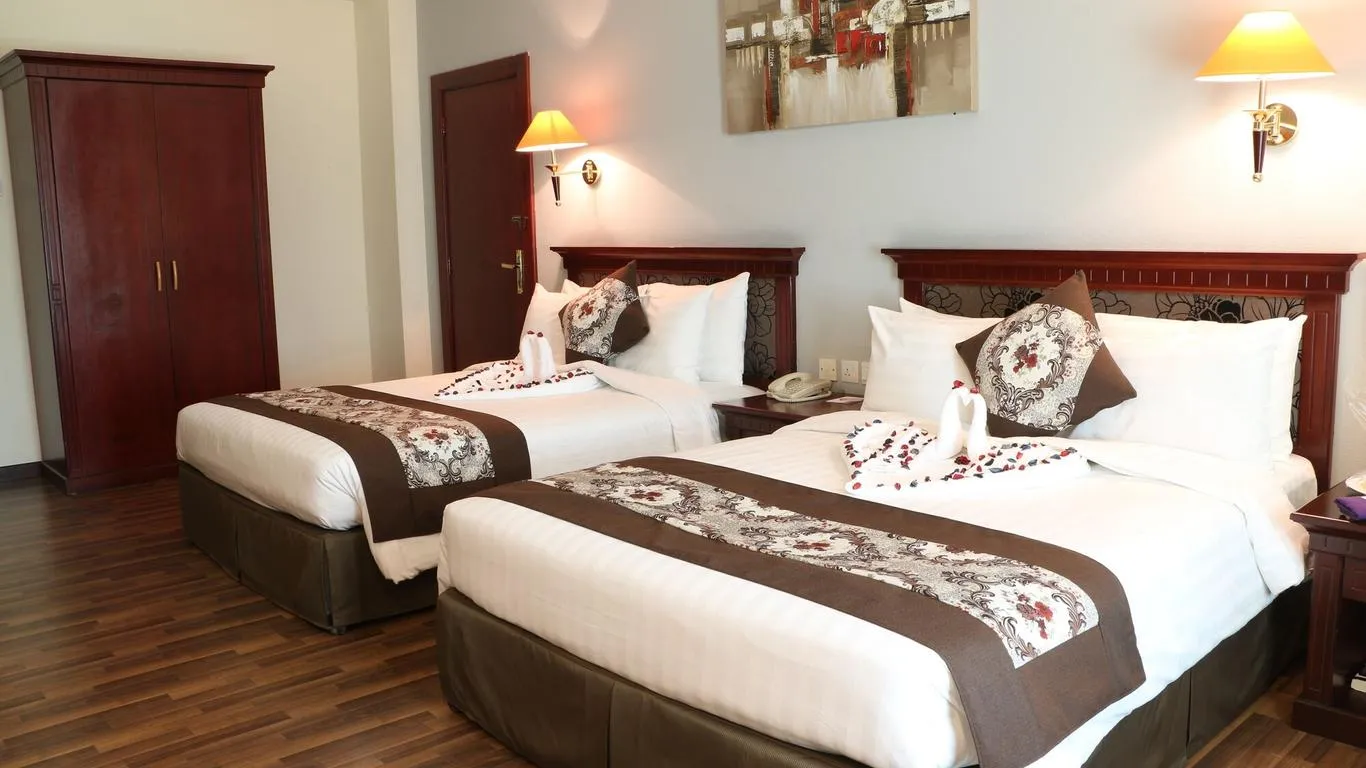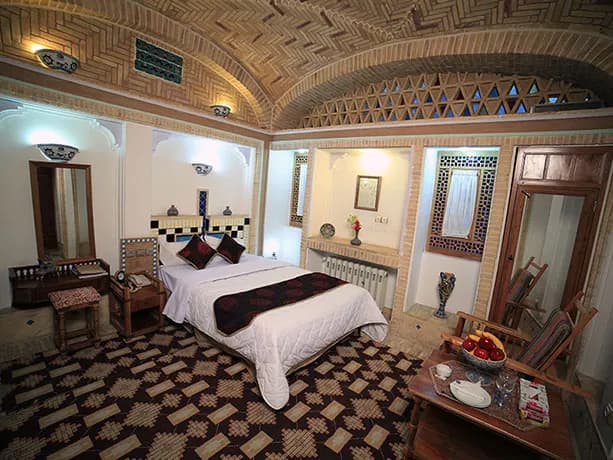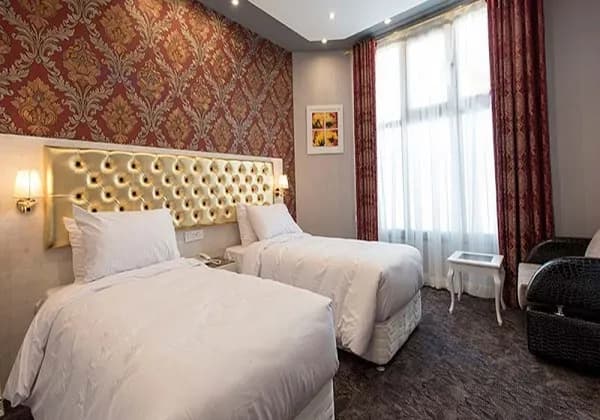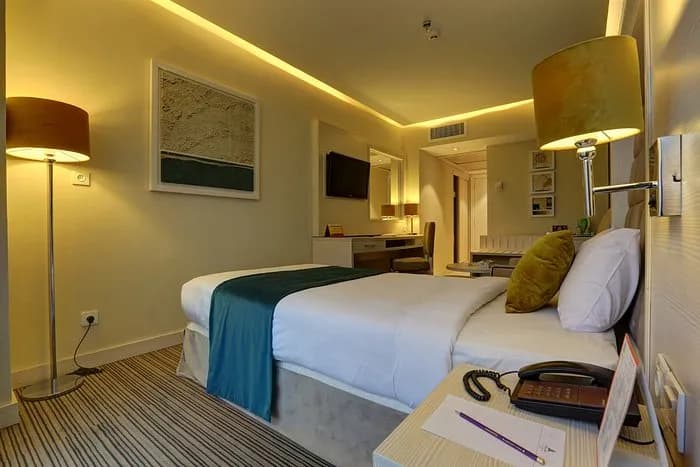
Journey to Iran, a land of ancient wonders and cultural richness. Explore the ancient ruins of Persepolis, wander through the magnificent bazaars of Isfahan, and discover a world of unparalleled hospitality.
Tour Overview




Itinerary Breakdown
A well-planned itinerary for an immersive experience.
Gather at Changi International Airport for your flight to Shiraz.

Maharloo Lake:
known as Pink Lake, is in high concentration of Algae which makes the lake look pink in color.
Pink Mosque:
The tiles are beautifully decorated with a preeminently pinkish rose colour.
Paradise Garden of Eram:
A historic Persian garden and a leading example of the "Paradise Garden" style, symbolizing heaven on earth.
Naranjestan Garden or Qavam House:
Naranjestan Garden (Qavam House) is a 19thcentury historic house and garden in Shiraz, Iran.
Citadel of Arg-e Khan Karim:
A majestic 18th-century fortress turned royal residence during the Zand dynasty.
Vakil Bazaar:
An old historic place in Shiraz. You can find everything there including many nice souvenirs, handmade arts.
Pars International Hotel (4*) or similar

Persepolis Takhte Jamshid:
The capital of the Achaemenid Empire, where the oldest remains of Persepolis date back to 515 BC and now a UNESCO site.
Naqsh-e Rostam Tomb:
A collection of ancient Iranian rock reliefs is cut into the face of the mountain and the mountain contains the final resting place of four Achaemenid kings.
Pasargadae:
UNESCO World Heritage Site, Tomb of Achaemenid King Cyrus II the Great: famous for his great conquests, tolerance and justice.
Tomb of Achaemenid King Cyrus II the Great:
Famous for his great conquests, tolerance and justice.
The Abarkuh Cypress Tree:
A 4,000-year-old city is located near unique traditional ice houses, mausoleums, and the beautiful Aghazadeh mansion featuring a wind tower.
Moshir al-Mamalek Garden Hotel (4*) or similar
Wind Catcher Towers:
A traditional Iranian architectural element typically seen on the roofs of old houses.
Tower of Silence:
A tower that was used by the Zoroastrians for the burial of the dead.
Zoroastrian Fire Temple:
The place where a sacred fire has been kept burning for more than 150 years.
Historical city of Yazd (UNESCO):
Renowned for its desert architecture, windcatchers, and ancient qanat system, preserving its cultural and architectural heritage for centuries.
Moshir al-Mamalek Garden Hotel (4*) or similar

Travel to Isfahan, en route visit Meybod and Naein villages.
Pigeon Tower:
With around 4000 nests for pigeons, it was built for the purpose of collecting the birds' droppings which was used for fertilizing the farms and also for leather tanning and making gunpowder.
Narin Castle:
Narin Castle in Meybod, with foundations dating to around 4000 BC, rises above the town. Though legend links it to King Solomon and jinns, the current structure mainly dates from the Sassanian era.
Si-o-se-pol:
A historic bridge in Isfahan, named for its 33 arches, with "Si-o-se-pol" meaning "33 Bridge" in Persian.
Caravanserai of Shah Abbas:
The caravanserai were built (1588-1629) to support Silk Road trade and reflect efforts to improve Persia's commerce and infrastructure.
Khajoo Hotel (4*) or similar

Vank Church or The Holy Savior Cathedral:
Founded by Armenians and was significantly expanded under Archbishop David, evolving from a small prayer hall into a grand cathedral.
Chehel Sotun Palace:
Chehel Sotun Palace, built by Shah Abbas I and expanded by Shah Abbas II to serve as а garden pavilion and reception hall for hosting dignitaries and ambassadors.
Naghshe Jahan, or Imam Square:
Naqsh-e Jahan Square, built around 1612, is one of the largest historic squares, known for its colorful tilework, grand dome, and uniquely angled mosque for visual impact.
Sheikh Lottollah Mosque:
Built under Shah Abbas I, is a Safavid masterpiece known for its 32-meter dome and intricate haft-rangi tilework and calligraphy.
Ali Qapu Palace:
Originally a two-storey gateway, the structure evolved into a six-storey, 48-meter building with cleverly designed proportions. Its floors housed offices, a grand terrace, and a royal music hall.
Grand Bazaar:
One of the oldest and largest market where local artisans trade Persian carpets, ceramics and other handicrafts.
Khajoo Hotel (4*) or similar

"Red Village" of Abyane:
Famous for its clay houses, textile traditions and unique dialect located on the slope of Mount Vulture, is one of the highest inhabited places in Iran.
City of Kashan:
Prized for its beautiful ceramics, hand-woven colorful carpets and silk textiles. Kashan is full of exquisite craftsmanship, as well as historical monuments.
Fin Gardens:
The oldest surviving Persian garden in Iran, features a classical chahar-bagh design with water channels dividing it into four symbolic quadrants representing sky, earth, water, and plants.
Borujerdina and Tabatabaei Houses:
A 19th-century Persian architecture, known for their elegant courtyards, wind towers, intricate stucco work, and fine decorative art.
Agha Bozorg Mosque:
The mosque features a symmetrical two-level sunken courtyard, a prominent dome on an octagonal base, and two slender minarets for vertical balance..
Parsian Enghelab Hotel (4*) or similar

Saadabad Palace Complex:
The Sa'dabad Complex is an 80-hectare historic site in northern Tehran with palaces, museums, and gardens, reflecting Iran's royal heritage.
White (Mellat) Palace:
The White Palace, built as the Pahlavi summer residence and now houses the Museum of Fine Arts.
Museum of Ancient Iran:
The Museum of Ancient Iran in Tehran displays artifacts from prehistoric to pre-Islamic eras, highlighting ancient Persia's cultural heritage.
Golestan Palace (UNESCO site):
Golestan Palace, a historic Qajar royal residence, is renowned for its Persian architecture, intricate tile work, Marble Throne, themed halls, rich handicraft collections, and beautiful gardens with pavilions and a wind tower.
Parsian Enghelab Hotel (4*) or similar

Free at own leisure until time to transfer to airport for your flight home.

Arrival Singapore!!! HOME SWEET HОМЕ

Hotel & tour price
S$ 2888
S$ 2888
S$ 2688
S$ 2588
S$ 1188
S$ 4188




Tour info
Includes
Excludes
flight info